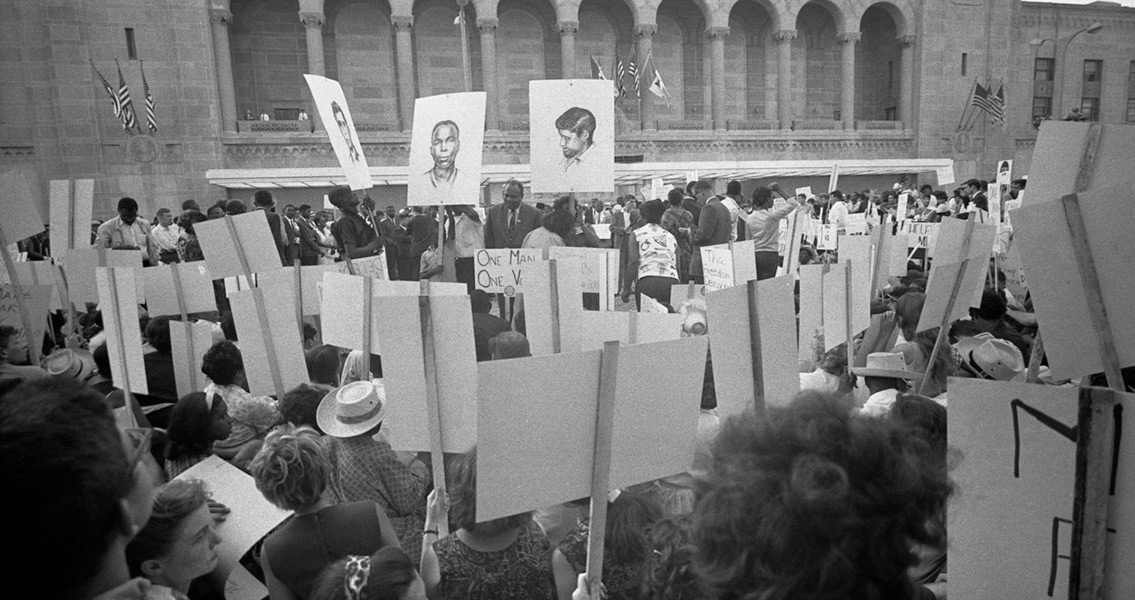<![CDATA[The remains of James Chaney, Andrew Goodman and Michael Schwerner were discovered buried twenty feet beneath an earthen dam near Philadelphia, Mississippi, on 4th August, 1964. On 21st June, 1964, the men's disappearance had captured widespread media attention across the United States. Responding to the growing public concern in the case, President Lyndon B. Johnson swiftly ordered the FBI to launch a far reaching investigation into the men's fate, codenamed the 'Mississippi Burnings'. As three civil rights workers campaigning in the deeply segregated state of Mississippi, fears grew that the men had been targeted by the state's powerful white supremacist organisations. The three civil rights activists were in Mississippi volunteering for a 'Freedom Summer' campaign to register black voters. Schwerner, a 24 year old white volunteer with the Congress of Racial Equality (CORE) had arrived in Mississippi in January 1964. He soon attracted the attention of the Ku Klux Klan by organisng the boycott of a store in Meridian which served the black community but didn't employ any African-American staff. Goodman had only arrived in Mississippi in June. A white student from Manhattan, he went to Mississippi for the summer to work for CORE in its campaign for social justice. Chaney, an African-American from Meridian, Mississippi, was another affiliate of CORE, and a close friend of Schwerner. The three met at a CORE training session in Ohio and after getting word that a freedom school Schwerner had helped set up in a church in Neshoba County had burnt down, decided to investigate the incident. In 1964 membership of the Ku Klux Klan was soaring in response to the growing momentum of the Civil Rights movement. On 24th April the Mississippi branch of the group organised 61 simultaneous cross burnings across the state, as a statement of its power. Through the summer a campaign of church burnings started, seeing churches of the black community torched and members of their congregations often beaten. Exact details of the three men's fate were only revealed in 2005, with the trial of Edgar Ray Killen, the Ku Klux Klan member charged with manslaughter for being the ringleader in the murders. As Schwerner, Goodman and Chaney left the burnt church in Neshoba County on 21st June 1964, they were stopped by the police for speeding. It has since been revealed that at least one officer in the local police force tipped off Killen that the men were being held. When they were released from the jail after hours of imprisonment, they were chased down and forced off the road. Klansmen then took the three civil rights activists to an isolated location and shot them. When their bodies were finally discovered on 4th August, Chaney had been so badly beaten that he was close to unrecognisable. The isolated piece of land where the bodies were discovered was the property of a known member of the Ku Klux Klan. In 1967, seven men were convicted on federal civil rights charges for conspiracy to murder Schwerner, Goodman and Chaney, but none of them served longer that a six year sentence. Over forty years after the murder the case was reopened due to new evidence, and Killen was convicted as the lead perpetrator, receiving three consecutive twenty year sentences. The horrific fate of the three civil rights activists drew attention to the terrifying extremes that could be employed by white supremacist organisations in the United States. In many ways the 'Mississippi burnings', and the publicity they received, aided the awakening of the country's conscience to the continued power of segregationist ideas, and the need for civil rights reform. Important legislation was passed after the murders, such as the Civil Rights Act and the Voting Rights Act, but as David Goodman, Andrew Goodman's brother told the Associated Press last year: "It took [the deaths of] two white men to wake up white America to what black America, in the South particularly, knew — that you could get murdered for your opinion or wanting to vote." Image courtesy of Wikimedia Commons user: US Library of Congress ]]>
Bodies of Murdered Civil Rights Activists Found
